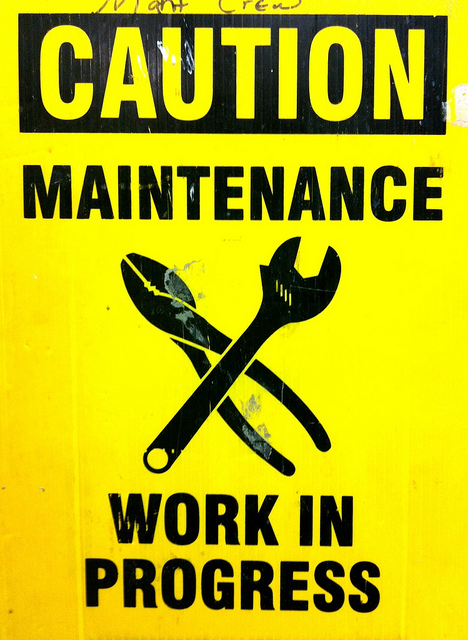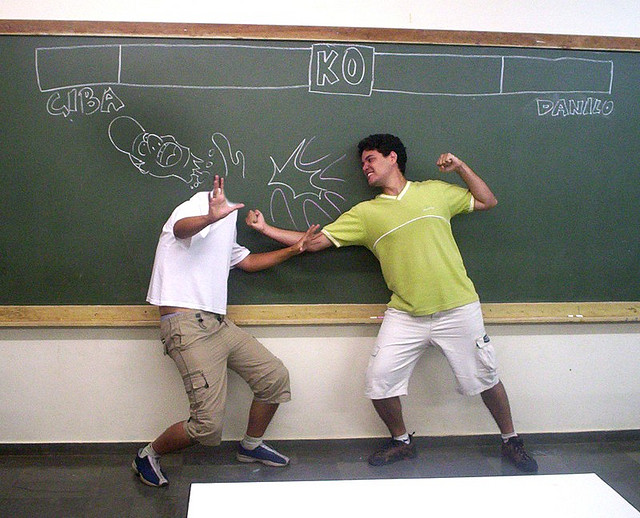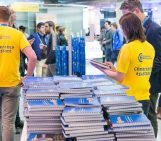When a geoscientist steps into a classroom, set to share their wonders of the Earth with a host of eager young minds, they are heading straight into unknown waters. Which students will rock the boat? What works well for this class and what should you steer well clear of? Not knowing the answers can turn a terrific outreach activity into a sinking ship. Fortunately, there’s a navigator on board. Sam Illingworth shows the importance of working together with teachers to avoid rough waters and make your outreach activity a success…
Albert Einstein once said, “A foolish faith in authority is the greatest enemy of truth.” Einstein was talking about a reluctance to accept the authority of another person’s, scientific or religious dogma, without first rationally testing that person’s claims, but he might just as well have been talking about scientists who participate in outreach activities without attempting to involve a teacher.
Scientists are good at science, that after all is what we are paid to do, and for the scientists that engage with school children and the general public many of them are also good communicators. Some of the scientists might even have teaching experience, but in the vast majority of cases they are not teachers, and to assume that they do not need the help and assistance of the classroom educators is ignorance bordering on arrogance.
As I have written about in previous posts, good outreach activities will build on what the students already know, rather than taking a deficit-model approach to teaching. Building on what the students know involves not only a detailed knowledge of the curriculum, but also an in-depth understanding of the needs and abilities of each of the students in the classroom. This is a lengthy process (here is an excellent blog post about ditching the deficit model from a teacher’s perspective) that cannot be fast-tracked, nor is there a need to do so when the teachers already have all of that information at their fingertips.
Even those scientists that participate in outreach activities, and who have experience of teaching at a pre-university level need to ensure that they actively engage with the teachers in the learning process. After all, whilst they may have experience of teaching in a classroom environment, they will not have experience of teaching in this classroom environment, and will be unfamiliar with the different learning styles and social nuances of the student cohort.

Every classroom is different. (Credit: isafmedia)
In developing an outreach activity for school children, I would suggest involving a teacher in the design process as early as possible. Their knowledge of the curriculum and of general learning behaviours within the school environment will ensure that the message you are trying to convey through your outreach activity does not fall on deaf ears. They will also be able to provide constructive feedback as to what they know will and will not work in their own teaching environments.
Once the outreach activity is beyond the design stage and is ready to be unleashed upon its intended audience, I would suggest beta testing it with a teacher (and their class) with whom you are well acquainted. Providing that the teacher knows that this is the initial airing of the activity, they will be able to offer you incredibly useful feedback to improve upon the event for future iterations. Such feedback is also incredibly useful in forming some of the structural basis of the evaluation of your project, which can (and should) be used if writing up the process for peer-review.

Working with teachers during the development phase of an outreach activity is excellent practice. (Credit: Robert Hruzek)
Once the initial beta testing has been completed, it is good practice to carry out a similar exercise with the teacher of every class that the activity is delivered to. It is wrong to assume that what works for one group of students will work for another, and by sending in a basic précis of the planned outreach to the teacher that you will be working with beforehand, they will be able to give incredibly useful feedback as to what they perceive will and will not work well with their students. This step can be the difference between engaging with the classroom in an effective and genuinely two-way dialogue and talking at a group of disinterested pupils whose minds have long since left the learning environment.
Working with the teacher at the time of delivery is also essential for a successful outreach event. The teacher will be able to assist with basic logistics such as room setup, and will also be able to ensure that the class is grouped (where necessary) to avoid wanton disruption.

Teachers are well placed to split up potential troublemakers, to avoid scenes like this one. (Credit: Carlos Villela)
It is sometimes easy to forget that outreach work should also be a learning experience for the scientists that are involved. The knowledge exchange that can be gained from observing the teaching and classroom management style of a good educator are skills that are directly transferable into key facets of research life; from communicating to a variably engaged audience to working with difficult co-workers. As the great American writer J.P. McEvoy put it, “When you talk, you are only repeating what you already know. But if you listen, you may learn something new.”
By Sam Illingworth, Lecturer, Manchester Metropolitan University



